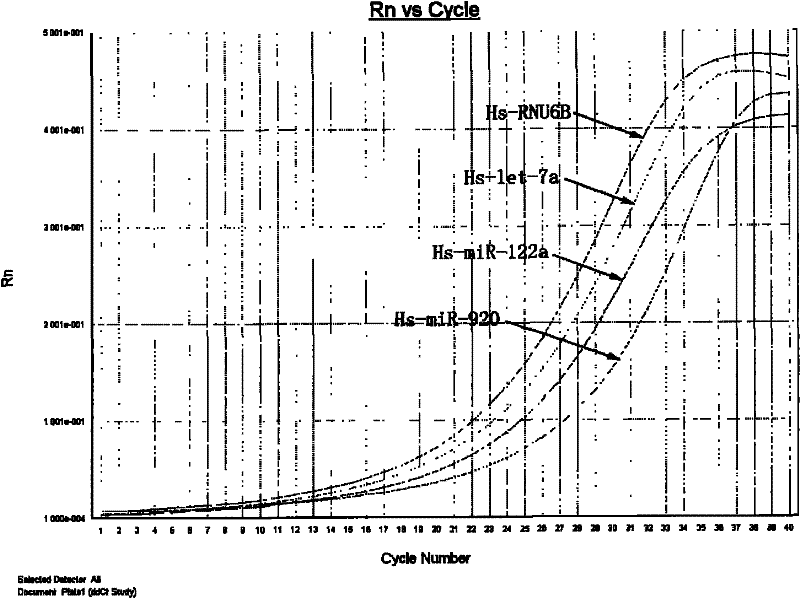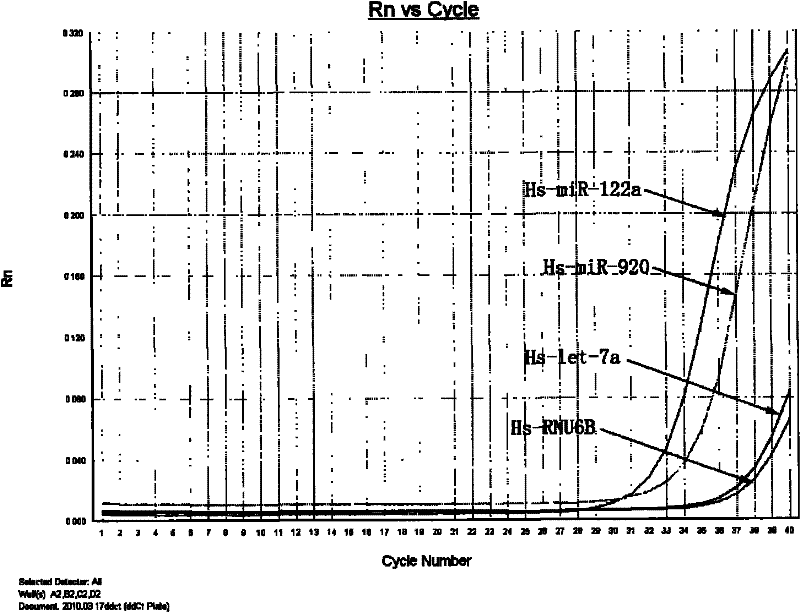A method for microRNA extraction from large-volume urine samples based on ultrafiltration concentration
An ultrafiltration concentration and large-volume technology, which is applied in the field of microRNA extraction, can solve the problems of low miRNA content, the inability to meet the experimental requirements of large-scale screening or expression detection, etc., to reduce the sample volume, shorten the time of adsorption and capture, and overcome the intractable effect
- Summary
- Abstract
- Description
- Claims
- Application Information
AI Technical Summary
Problems solved by technology
Method used
Image
Examples
Embodiment 1
[0014] The method of the present invention is used to extract free miRNA in the urine sample and detect its expression.
[0015] A urine sample is randomly obtained, and the health status of the sampling subject is unknown. The specific implementation process is as follows:
[0016] (1) Immediately add a certain amount of stabilizer to the urine sample (30ml), dissolve naturally and store at -80°C or proceed directly to the next experiment.
[0017] (2) Concentrate the urine sample to about 1 ml using an ultrafiltration tube (Amicon Ultra-15 3K, millipore), extract with Tris saturated phenol:chloroform (1:1), and take the supernatant. Then, the miRNA was extracted using a commercially available kit (miRNeasy Mini Kit, Qiagen).
[0018] (3) The obtained miRNA was reverse-transcribed using a reverse transcription kit (miScript Reverse Transcription Kit, Qiagen), and the reverse transcription conditions were: 37° C. for 60 min; 95° C. for 5 min.
[0019] (3) Fluorescence quanti...
Embodiment 2
[0025] Extraction of the same sample compared to the concentration method without ultrafiltration
[0026] Sample is identical with the sample of embodiment one, and specific implementation is as follows:
[0027] Refer to Example 1 for the pretreatment of the urine sample, without going through the ultrafiltration concentration step in Example 1, directly enter the Tris saturated phenol:chloroform (1:1) extraction in Step 3, and the remaining steps are the same as in Example 1. Since it is not concentrated by ultrafiltration, the amount of urine sample processed is limited, which is one-third of that in Example 1. The test results are shown in Table 2.
[0028] Table 2
[0029]
[0030] from Table 2 combined with the attached figure 2 It can be seen that after 40 cycles, the fluorescence value has not reached a stable value, and after converting to the Ct value, Hs-RNU6B and Hs-let-7a are not detected.
PUM
 Login to View More
Login to View More Abstract
Description
Claims
Application Information
 Login to View More
Login to View More - R&D
- Intellectual Property
- Life Sciences
- Materials
- Tech Scout
- Unparalleled Data Quality
- Higher Quality Content
- 60% Fewer Hallucinations
Browse by: Latest US Patents, China's latest patents, Technical Efficacy Thesaurus, Application Domain, Technology Topic, Popular Technical Reports.
© 2025 PatSnap. All rights reserved.Legal|Privacy policy|Modern Slavery Act Transparency Statement|Sitemap|About US| Contact US: help@patsnap.com



